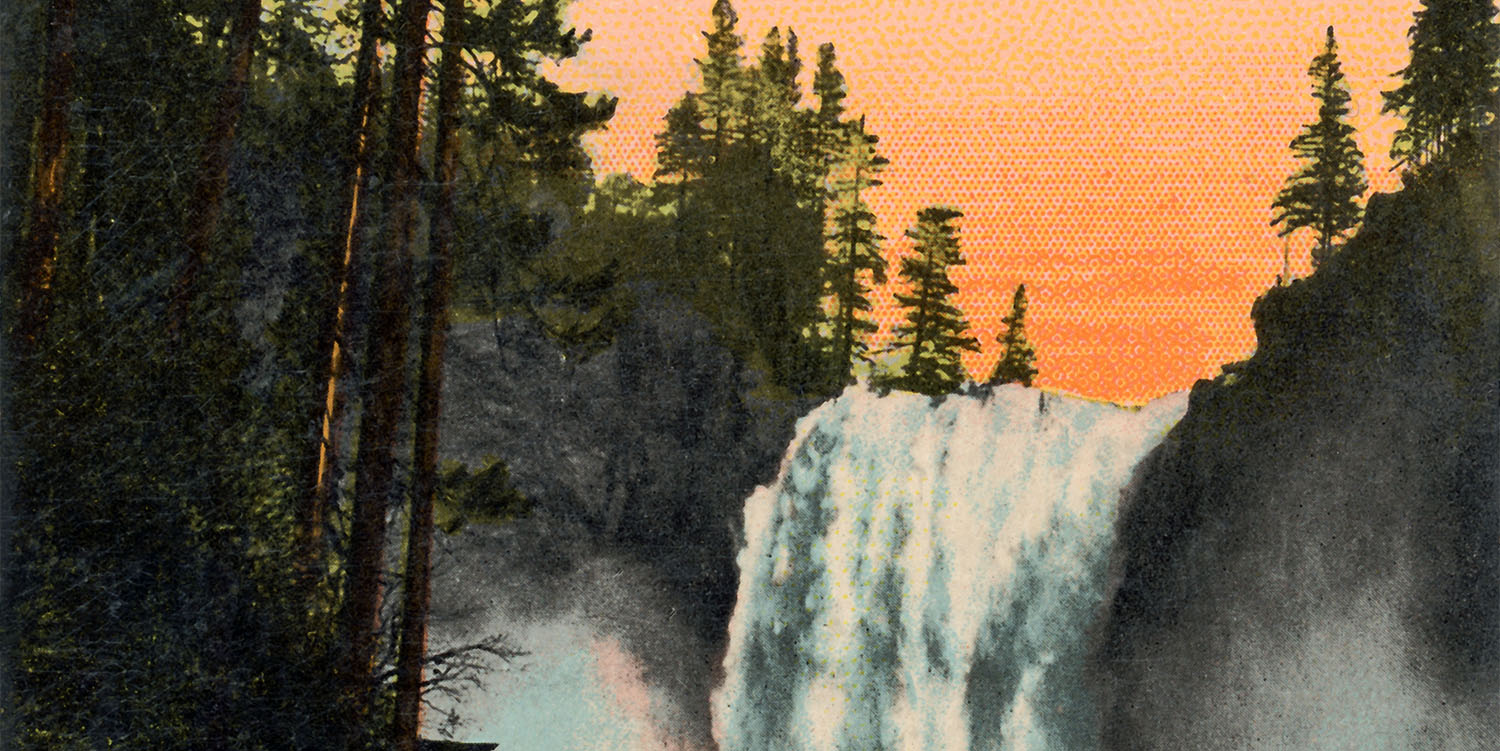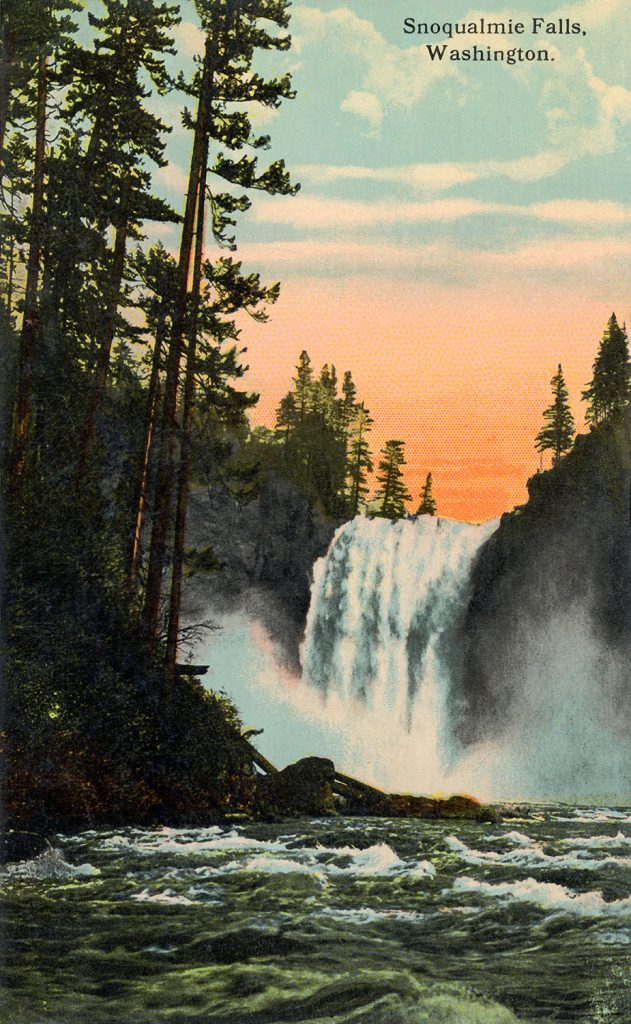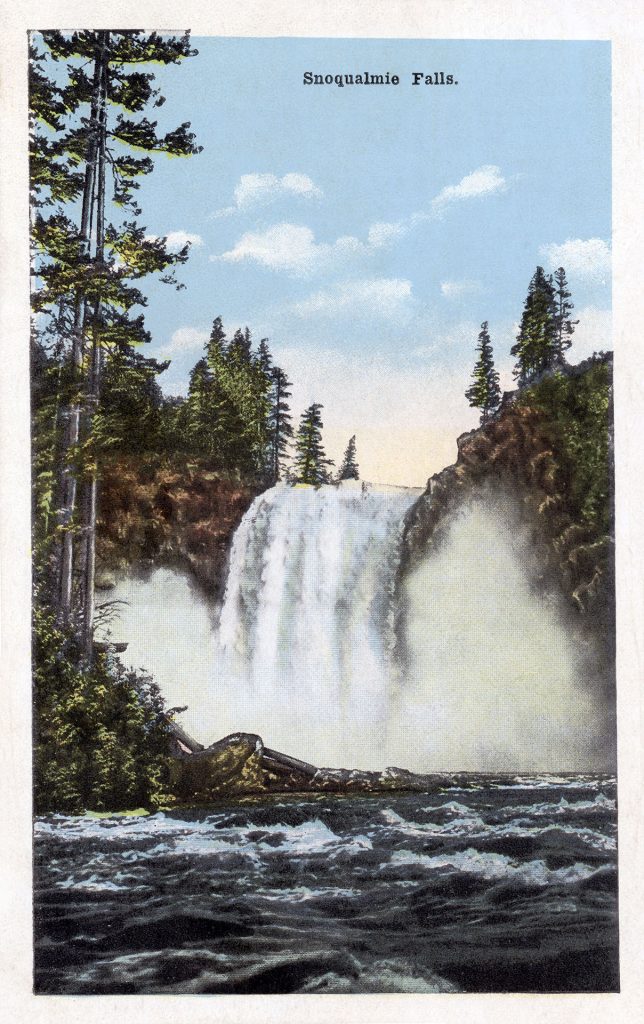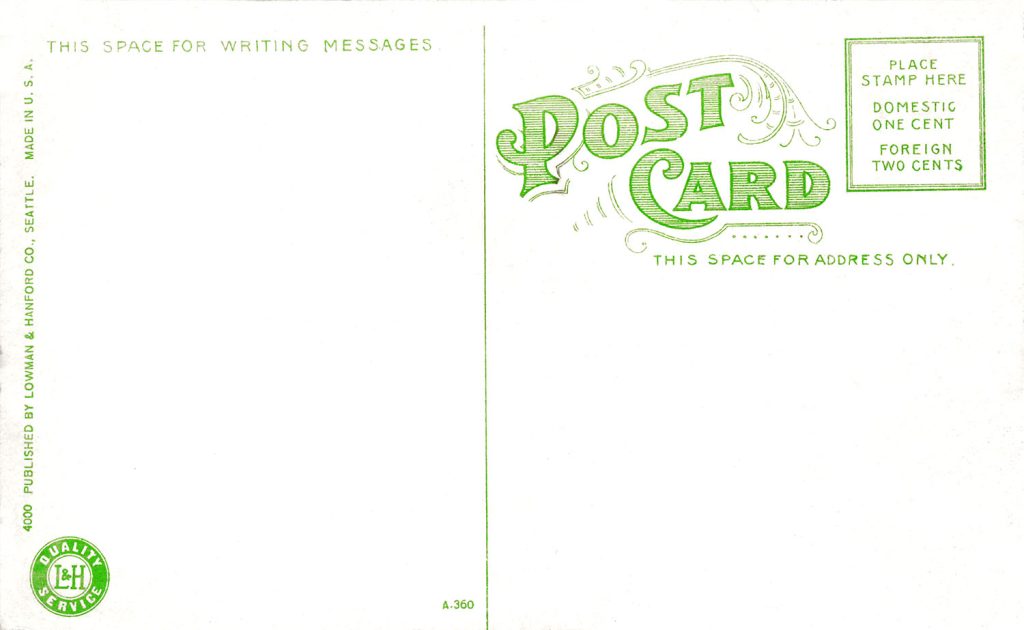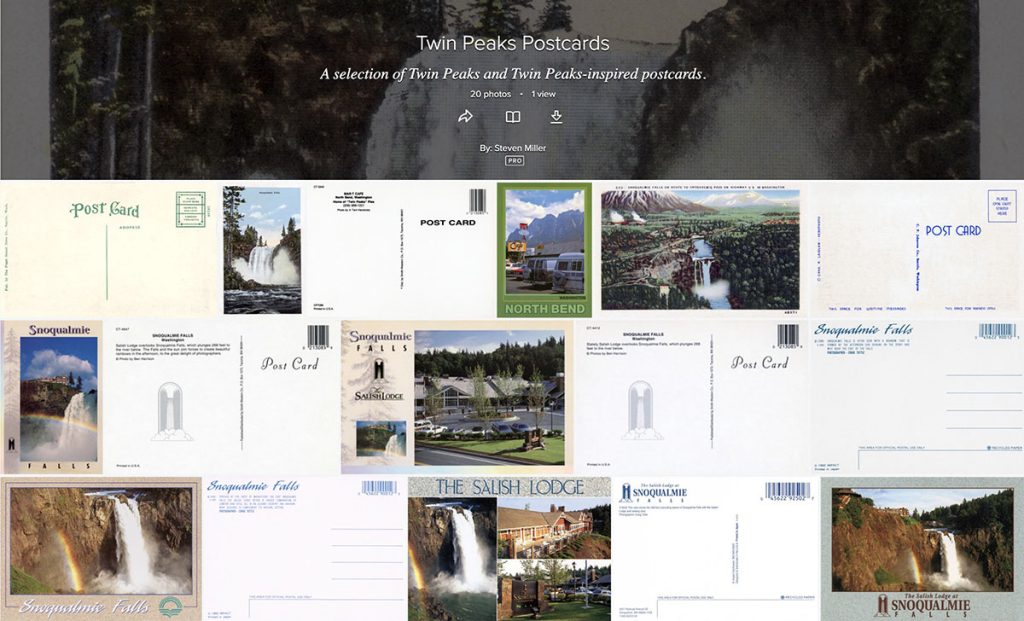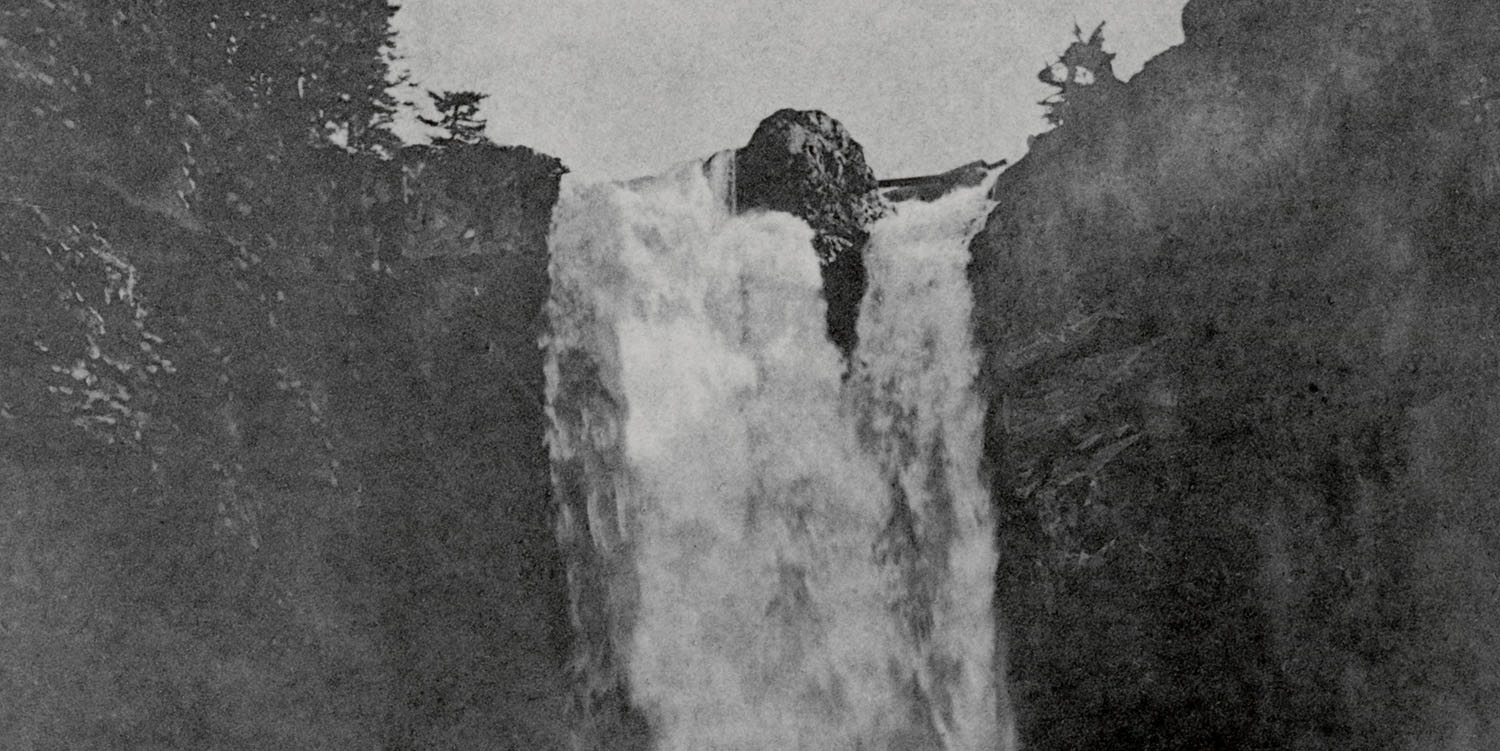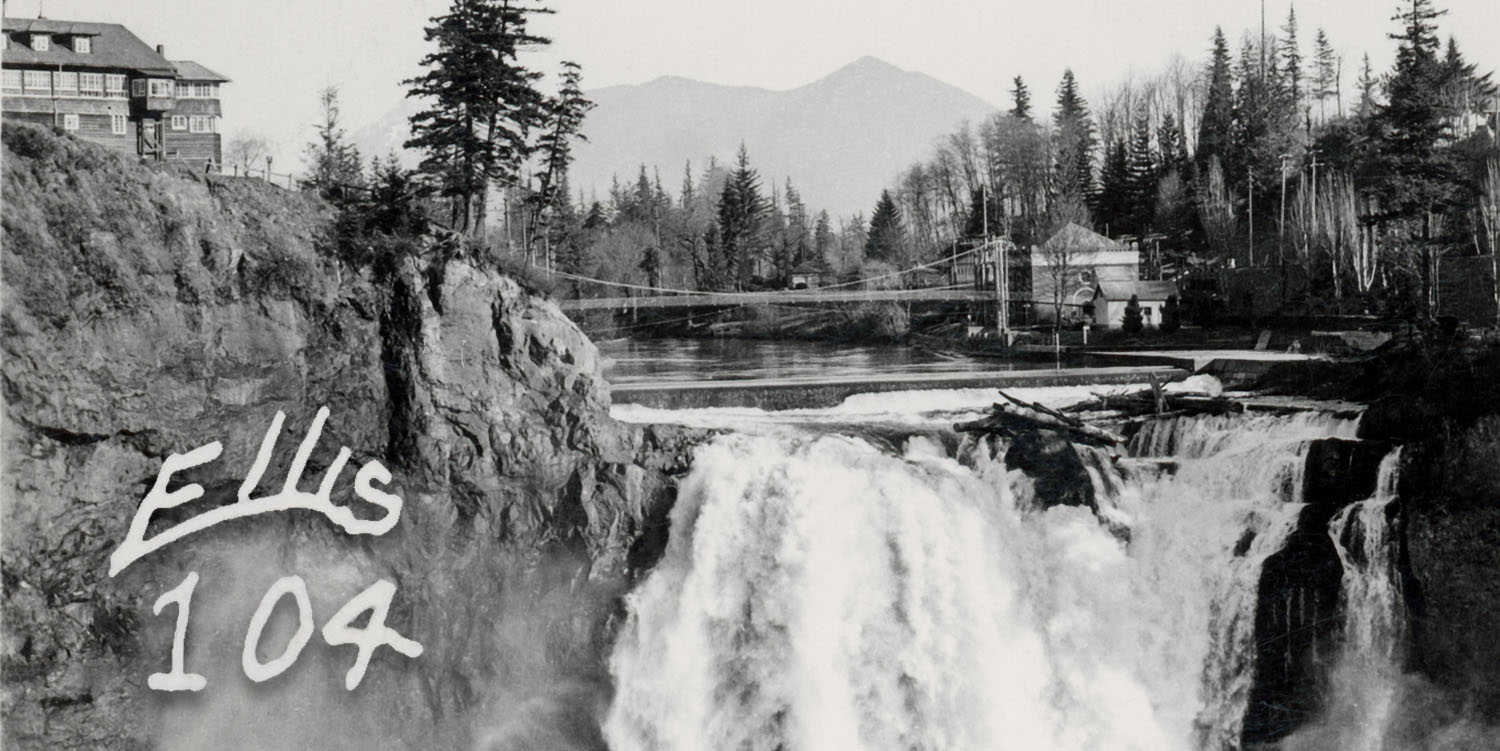Long before Snoqualmie Falls in Snoqualmie, Washington appeared in Twin Peaks, this 268-foot waterfall was a top tourist destination in Washington state for decades. I recently acquired a early 1900s postcard of the falls at sunrise that was printed before the Snoqualmie Falls Lodge was constructed in 1916.
SNOQUALMIE FALLS POSTCARD BY LOMAN AND HANFORD – A-360
This view of Snoqualmie Falls was captured at dawn as the sun rises from the lower observation area. You’ll notice the spot where Snoqualmie Falls Lodge was eventually constructed is covered by tall fir trees.
The view is similar to this postcard published by Puget Sound News around 1908. Based on a similar image found on HistoryLink.org, the original photography may have been taken during the spring run off, which brings a high volume of water down from the melting snow-capped Cascades. The Snoqualmie River has long been known to cause significant flooding around the Snoqualmie Valley region (and was a factor in the demise of the original Fat Trout Trailer Park from Twin Peaks: Fire Walk With Me).
A sacred spot to the Snoqualmie Tribe, the falls are considered the birthplace of the tribe. Today, more than 2 million people visit this historical site annually. It’s doubly important to respect the land and this area which the Snoqualmie Tribe regained ownership in 2019. Learn more about the Snoqualmie Tribe Ancestral Lands movement and how to protect and respect this area during your visit.
The postcard was published by Lowman & Hanford Printing and Stationery Compay, Co. in Seattle, Washington, a printing company that dates from around 1882. This card is has the production number A-360.
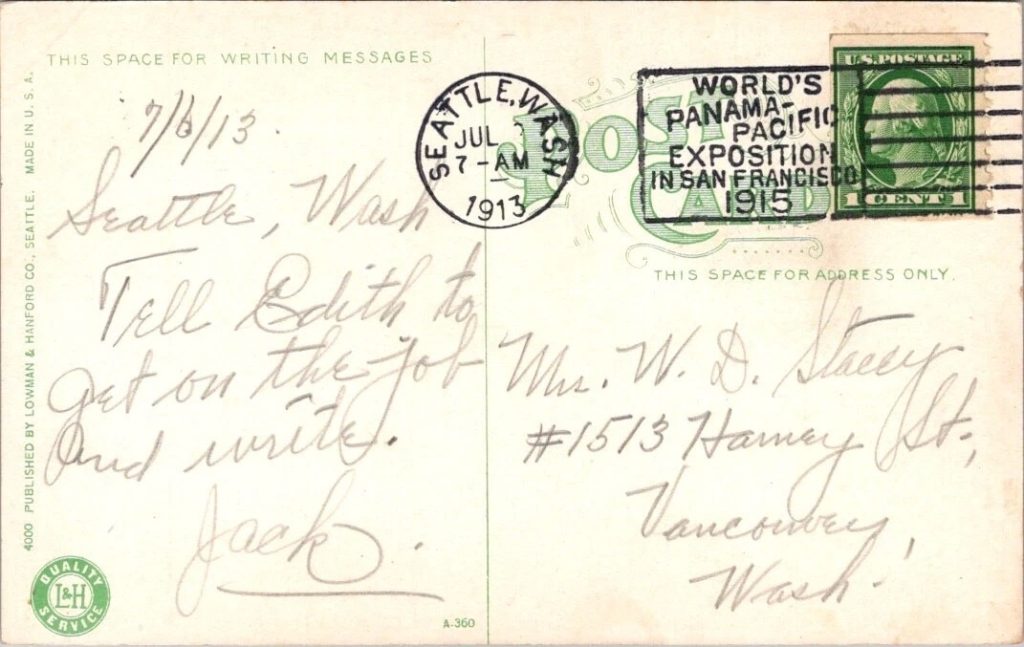
One challenge I’ve discovered collecting Snoqualmie Valley postcards is they lack production dates. There are no catalogs that and the postcards rarely contain dates. One trick I’ve discovered is looking for cancellation stamps. I know Snoqualmie Falls Lodge (known today as Salish Lodge & Spa) was constructed in 1916. I found a similar postcard on ebay from “Jack” that was send to Mrs. W.D. Stacey in Vancouver, Washington on July 6, 1913.
Using the aforementioned Puget Sound News postcard as reference, this Lowman and Hanford card could have been printed between 1908-1913.
WHO ARE LOWMAN AND HANFORD PRINTING AND STATIONERY COMPANY IN SEATTLE?
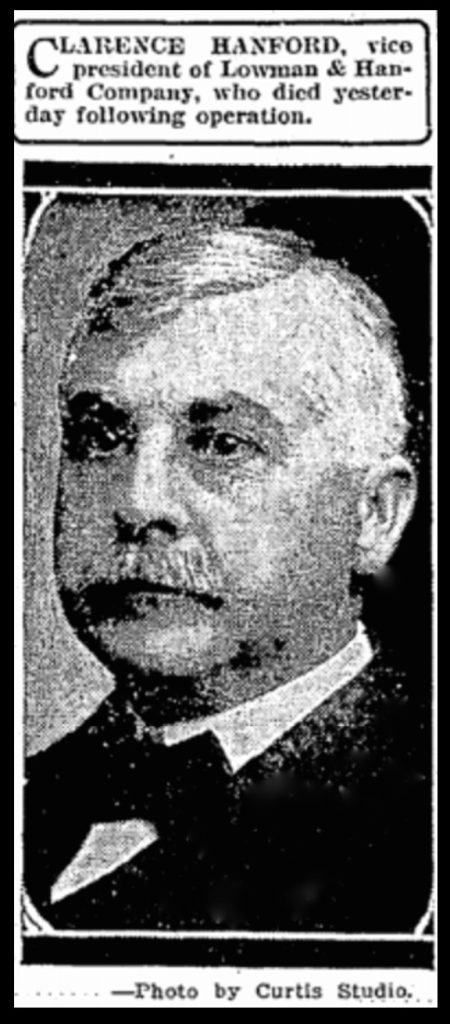
Clarence E. Hanford was a Seattle, Washington native born on May 13, 1857 to Washington Territory pioneers. His older brother Thaddeus Hanford was the publisher of the Seattle Post-Intelligencer. At age 13, Clarence began learning the printing trade at the newspaper’s office, eventually becoming foreman of the printing department. He later bought out the job-printing department to form a new printing office with J.H. McClair in 1879. A few years later in 1881, Hanford purchased McClair’s interest and would form the Lowman and Hanford Printing and Stationery Company the following year. Hanford died on his birthday in 1920 due to complications from surgery.
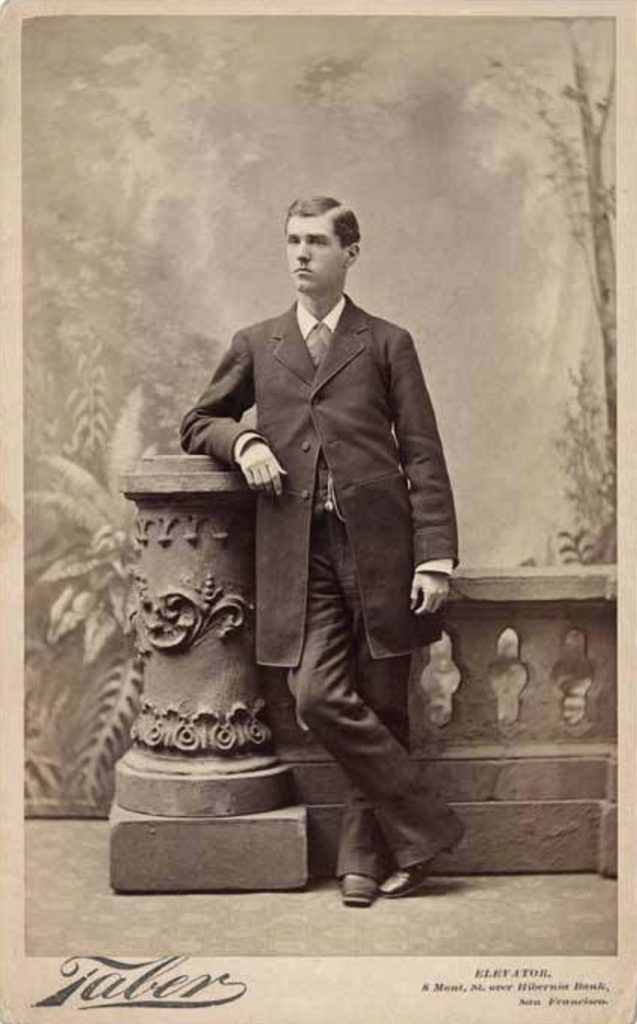
James D. Lowman was born in Hagerstown, Maryland on October 5, 1856. At 21-years old Lowman arrived in Seattle in 1877 at the invitation of his cousin, Henry Yesler, then mayor of Seattle. Lowman quickly rose in the ranks while in Seattle, going from a dock’s assistant master to businessman. In 1882, he joined forces with Clarence Hanford to open their stationery and printing firm. This partnership was operated under the name of Lowman & Hanford until April, 1884, when it was incorporated as the Lowman & Hanford Stationery and Printing company.
According to the Seattle Times, Lowman owned banks, buildings, hotels and electric trolleys. He also served as the first president of the Seattle Theatre, helped found the Seattle Golf Club and was a charter member of the Seattle Tennis Club. He was also president of the Seattle Chamber of Commerce from 1909 to 1911 and was honored with a life membership in 1947 at age 91. He lived in his First Hill home for 66 years and bequeathed his mansion and property to the Seattle Swedish Hospital. On this property, there now stands the Fred Hutchinson Cancer Research Center and the Swedish Nursing Facility.
Loman died at the age of 91 in 1947
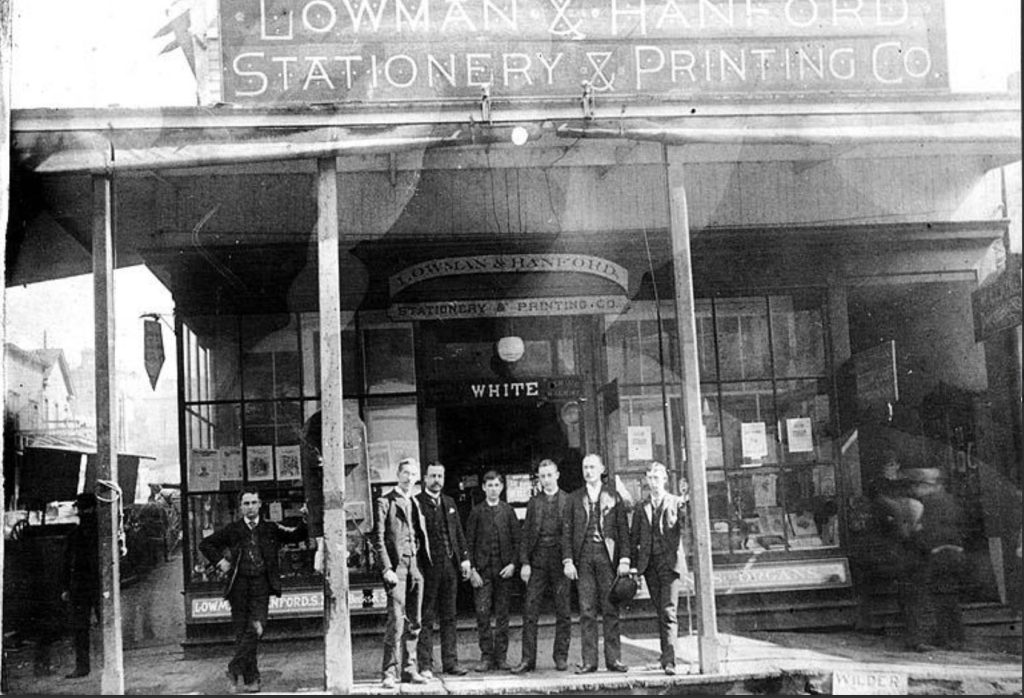
This was the first building housing the Lowman and Hanford Printing and Stationery Company but it burned down in a fire on June 6, 1889. Two months after the fire, the duo constructed a new two-story building stood on the site. By 1892, the company constructed a four-story building on 1st Avenue and Cherry Street in downtown Seattle.
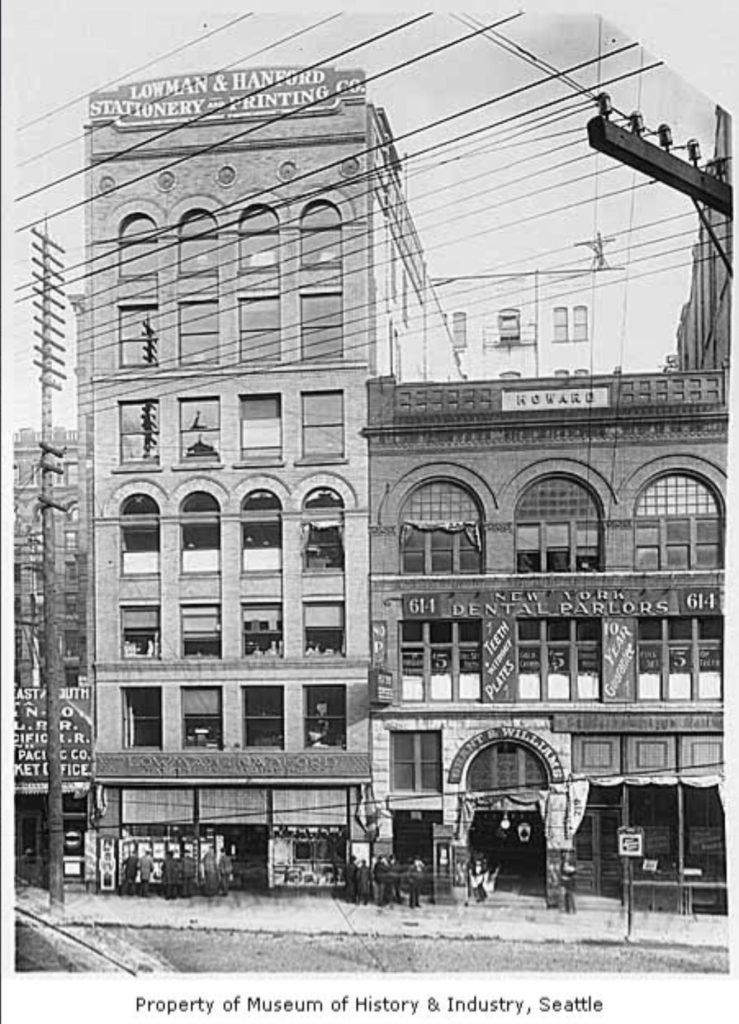
By 1899, they had constructed a seven story building around 1514-1516 3rd Avenue in Seattle. A fifth office building was constructed at 68 S. Washington Street in Pioneer Square following the Great Seattle Fire of 1899.

For a long time, a L&H company emblem painted on that building was seen from the Alaskan Way Viaduct. During a building renovation in 2023, the company logo was removed. The printing company eventually moved to Elliott Avenue in 1982.
Throughout the 1900s, the printing shop was known by several names – L&H Printing Co. and then L&H Engraving Co. before The Ligature bought the shop in 1995. They operated the location until July 2006 when a major client pulled business from the location forcing its closure. Printing presses were relocated to Los Angeles and San Francisco.
The Ligature was acquired by the Taylor Company in 2011 and merged with two other businesses to form Echelon Fine Printing.
It’s wild to think that a postcard produced in the early 1900s would later feature such an iconic spot found in a television series from the 1990s.
You can see more high-resolution postcard images on my Flickr account.
Discover more from TWIN PEAKS BLOG
Subscribe to get the latest posts sent to your email.

